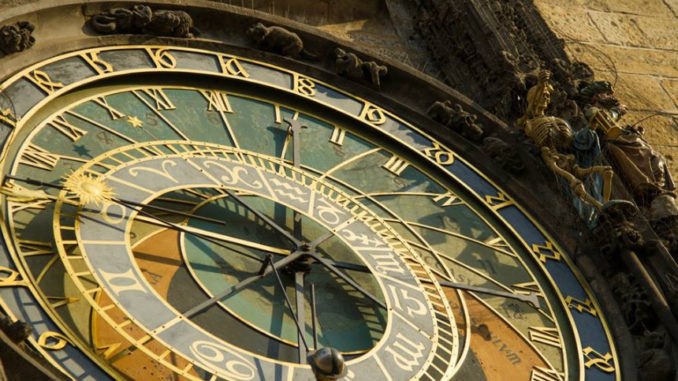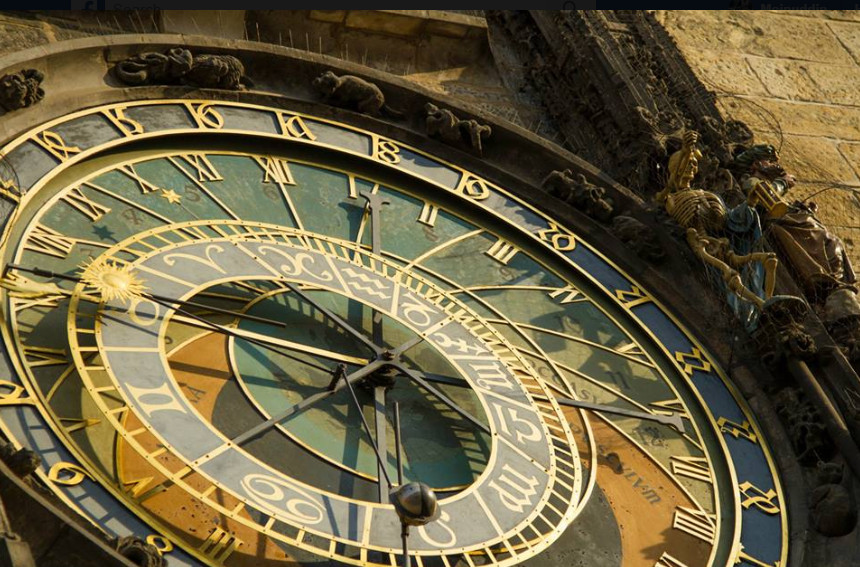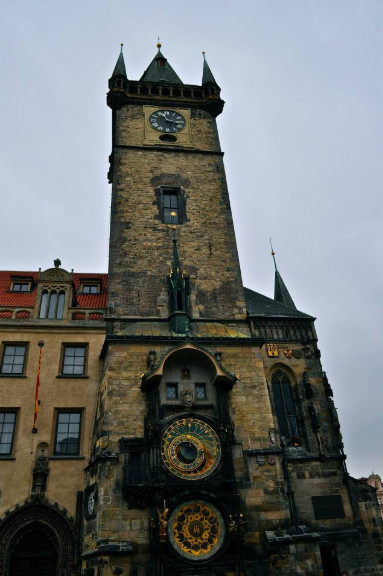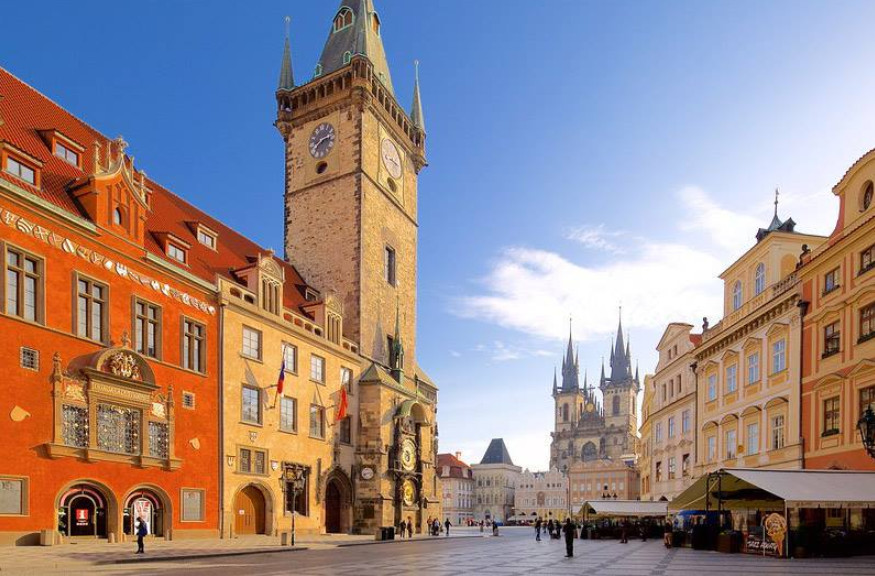
The medieval astronomical clock found in Prague, Czech Republic’s capital city is a historic landmark that dates back sometimes in 15th century. Prague Astronomical Clock is also referred to as the Orloj. Legends have given stories about how the iconic astronomical clock was built.
Among the widespread legends that talk about how the clock was created is the one dating back about the 15th century. This is the time the clock was seen. The story says that a clock master named Hanus was the creator of the clock. The Prague’s city councilors select Hanus to create an original device, a device capable of measuring time while also performing other functions.
Upon the creation of the clock, the councilors were concerned that the clock master would go on to produce a similar device for another city. The story goes on to say that the councilors started planning how they would eliminate the possibility of having another similar clock created, and they had one – that’s to make the Hanus blind.
So, one night, the city councilors sent people to force their way into the clock master’s home and injure his eyes using a chuck of iron. This incident left him blind, but Hanus realized that there was a plan to make him blind. In revenge, and with a little help from his apprentice, Hanus went to the clock and halted it. It took over 100 years before reviving the clock. Six centuries later, it’s the world’s oldest astronomical clock that is still ticking.
Now that you know one of the legends about the astronomical clock, so who really created it?
The Real Creator of the Prague Astronomical Clock
Like many versions of the clock’s legend stories, the above story about Hanus cites the wrong person as the craftsman of the clock. An insightful description about how the dial functioning of the astronomical clock discovered in 1961 says that it was created by Mikuláš of Kadaň in 1410 with help of a university teacher and astronomer known as Jan Sindel. The description is contained in a paper.
During the history of the clock, it has failed several times and it needed maintenance. However, no one had the knowledge or knowhow on how to fix it, so when it stopped ticking sometimes late in the 18th century, there was a plan by the local officials to replace it. Fortunately, they never replaced it with another piece so it remained dysfunctional for an extended period. The much needed repair was done around 1865, during which a new feature was added, and that’s is the Calendar Dial.
The astronomical Dial feature is considered the oldest of the clock’s components. It’s also the component that makes the clock to be so unique. The Calendar Dial illustrates how individuals in the medieval time observed the universe. The blue bits of the dial represent the skies you see beyond the horizon whereas the brownish parts represent the skies below the horizon. The inscribed Latin letters show, which side is west and which one is east. The directions south and north are represented by denotation for below and above the horizon, and these denotations are marked using Latin words for “twilight” and “dawn”.
A zodiac circle represents the stars. The circle runs in harmony with the stars. The clock has two hands that symbolize the human’s closest stellar bodies, that are – the moon and the sun. The Dial’s three sets are able to count three different times. The Old Czech time or the Italian time is represented by the first Dial while the second Dial set represents the Central European Time that is measured by the sun’s pointer. This is the Dial that measures the hour from 1 through to 24. Initially, the second Dial set counted the hours in Old German Time and before that, it measured the hour in Bohemian Time. The most interesting of the Dial sets is the third one that measures Babylonian Time. In this measure, the length of the hour depends on the season of the year. For example, in summer, you have a longer hour, while in winter the hour is shorter. The Prague astronomical clock is the only clock on the world that can track Babylonian Time.
While the astronomical dial has more functionalities, the Calendar dial has fewer functionalities. However, the latter is brilliant in its own way. For example, in its center part, it displays a mark of the Prague’s Old Town while the outer ring describes each day for an entire year. The current day displays at the top. A zodiac sign located at the medallion represents each month.
Mounted on the front part of the Old Town Hall Tower, the Prague astronomical clock is a living symbol of craftsmanship, intelligence, and medieval art that existed over 600 years ago. It really knows how people were sometimes 600 years ago. The clock showed the time to commons, kings, and peasants alike. It’s capable of displaying the date, time, position of celestial bodies, Christian holidays, and astronomical cycles.
Interesting Features of the Clock
After the end of every hour, you see 12 Apostles parading within the clock’s windows. Together with the figures found on the clock’s outer side, the Apostles start moving. A Skeleton starts the entire parade by ringing the bells found on the string. It is an interesting show for everyone who visits the clock. All the 12 Apostles introduce themselves within the small windows.
- The Turk or Turek meant to symbolize delight and lust will appear shaking his head to signify rejection.
- Then you have Miser or Lakomec who welcomes the Apostle with a nod of his head. Miser also shakes his purse or pouch of money while threatening the Apostles with a stick.
- Vanity or Marnivec is seen observing the situation, but mostly remains watching himself in a mirror.
- The Rooster or Kohout closes the allegorical procession. It ends the parade with a crown. This is also the time when another hour of life starts. During all this time of the show, the clock is counting.
While some figures or characters are in motion, there are others that remain stationery since they are designed of wood material. These figures are the Astronomer with a telescope, a Philosopher with a quill, Archangel Michael having a fiery sword, and Chronicler with a book. It’s worthwhile pointing out that the timber used to produce the figures of the clock came from a donation given by people from the Czech Republic. Besides donating wood, people of Czech also donated about 4,200 gold for the clock. In 1865, when the astronomical clock became damaged by fire, repair was needed so a public collection was publicized that led to the donation of the gold. These kinds of donations show how much the people of Czech love the astronomical clock.
The 1865 Damage of Orloj by a Fire
Although Prague astronomical clock was seriously damaged by a fire that occurred in 1865, it survived the incident. During the WWII, Germans bombarded Prague throwing a grenade right at the Old Town Hall. A fire engulfed the town hall damaging the clock including several figures. That’s why you see that most of the figures are a replica of the originals.
Despite the damage that rendered the clock functionless, an employee of Hainz watchmaker company revived it. Initially, the Hainz employees wanted to discard the original clock’s system and have it replaced with another masterpiece of modern machine. But one employee did not agree with that kind of decision and decided that he was going to repair the clock himself. It is an iconic personal decision that saved the astronomical clock for future generation. Weren’t it for the unknown watchmaker that saved the clock from replacement, the Old Town Hall wouldn’t be as a renown historic and tourist destination as it is today.
Prophetic Symbol of the Old Town Hall Astronomical Clock
It’s argued that Prague astronomical clock isn’t a normal clock, it’s referred to as “the devil’s eye”. It is said that every time Czech lands face dangers of a catastrophe, Orloj clock stops functioning. This is exactly what happened in 2002 when Czech Republic experienced catastrophic floods causing a big damage. During the floods, the capital city of Czech, Prague was cut off from electricity, which is the electricity that powers the clock.
Prague astronomical clock was a tool used by initiates, mages, mathematicians, and astrologers. Probably, this could be the reason there exists so many different legends about the clock. The devoted called the astronomical clock the devils eye and it was build to help reveal God’s revelations and the secrets about the movements of celestial bodies. It was regarded as the patron of alchemists and prophets. Originally, the astronomical clock didn’t have statues, there were no apostles or even decorations. Initially, the clock was not meant to attract attention but remain conceived as the evil’s timekeeper.
How The Prague Astronomical Clock Works
While the clock comprises of about 350 parts, the original one dating back the 15th century are about 75 percent. The whole clock is operated by numerous machines. There is the main machine that controls the clock’s dial as well as other smaller machines. Apart from that, there is a pointing machine that operates the Zodiac, Ecliptic, Moon, and the Sun pointers. The outer Czech dial is moved by the 24 hour machine.
The Moon machine displays the position and phases of the moon while the Apostles machine is used to open the windows while at the same time controlling the Apostles’ movement. The calendar machine has 365 teeth and it turns after the midnight strikes with the exception of a leap year. The Božka’s chronometer is designed to help increase the reliability and accuracy of the entire machine.
It requires technical prowess to operate the clock. In the beginning, the clock was controlled manually. From the time when the calendar dial was fitted beneath the astronomical dial back in 1490, each night, the calendar boards were manually moved. The clock became fully mechanized in 1566. Also, in the past, only hours were shown by the clock, later on separate dials were included that display minutes.
Visiting The Prague’s Astronomical Clock Tower
Orloj is among the most popular attractions in Prague. If you want to avoid the masses, you will need to do some planning. Crowds are heavy around the end of the hour because they want to see the statues movement. In between the hours, there are fewer people compared to the top of the hour. However, the best experience is when the statues start moving.
To catch the action better, you will need to arrive about 15 minutes before the show starts so that you are not stuck behind the crowd. Most people do the viewing at around mid-day, but early morning and late afternoon, it is much quieter.
Astronomical Clock-Photos







Be the first to comment